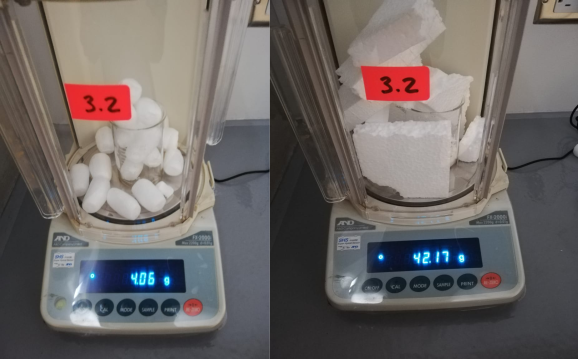16. Wildcard week¶
For this week as we could not have access to the lab yet, I researched some things about my topic of interest for this wildcard assignment, the topic I choose for this week is Bioplastics & Composites.
What are Composites?
A simple way to explain it is that it’s a combination of components, this material is made by combining two or more natural or artificial elements that are stronger as a team than as an individual.
Also known as Fiber-Reinforced Polymer (FRP), composites are made from a polymer matrix which is reinforced with material like fibers, that fiber could be engineered, man-made, or natural (such as glass, carbon or aramid). This matrix protects the fibers from external damaging and helps to transfers the loads through the fibers, while the fibers, give strength and stiffness to reinforce the matrix to avoid cracks and fractures.
What is Bioplastic? It is a Biobased Polymer derived from biomass, and it may or may not be biodegradable, generally, it is comprised of a biopolymer, a plasticizer, and a solvent.
I learned that there are several types of bioplastics, it can be agrosourced or biodegradable or both. agrosourced is not made from petroleum but from biological renewable materials such as vegetable matter.
As I have been reading, I found references and a variety of recipes which I going to test once I´ll back in the lab and got some raw materials, now I would like to test some types of agrosourced made from gelatin-based and cornstarch here are some ingredients and materials I will need to count with
Equipment list. Balance Heater Pan Spoon Clean glass, plastic or aluminum board or mold
Recipe 1
-
Cold water (240ml)
-
Gelatin Powder (50g)
-
Glycerol (12 G)
Recipe 2
-
Cornstarch (g) 0 to 20
-
Glycerine as a plasticizer (g) 80
-
Distilled Water (ml)1.6
-
Vinegar (ml) 15
Recipe 3
-
Glycerine (g) 0 to 60
-
Water (ml) 60
-
Gelatine (ml) 45
-
Soap (ml)6
Varying he amounts of each ingredient could be possible to identify which conditions are changed so it is still pendent the experimental part.
Here are useful links I reviewed for this week and will be the main reference to develop the experimental component of this assignment
In order to explore the process to prepare composites, were develop some essays using gypsum and different fibers some of them come from solid waste such as poliestirene, rice hulls and coconut fiber.
 The poliestirene material have a lot of air inside it and this cause to be very light weight, the first idea was to prepare dry mixes 60% gypsum and 40% from the other materials and them add water to prepare the wet mix.
The poliestirene material have a lot of air inside it and this cause to be very light weight, the first idea was to prepare dry mixes 60% gypsum and 40% from the other materials and them add water to prepare the wet mix.


Some mixes dry faster than others because of the capacity to catch humidity that the fiber could have. Once the mixes were prepared this were put inside a convection oven at 40°C for 1 hour, after that time results looked good but the more humid mixes required more heat, so there were dryed for 1 hour more, this time at 80°C.

After that process of heating in the oven and some days of curing at outdoor the tests demonstrate that the more uniform mixes were the ones with coconut and the poliestirene fibers , so this will be used to prepare a piece that could be include to the final project.

